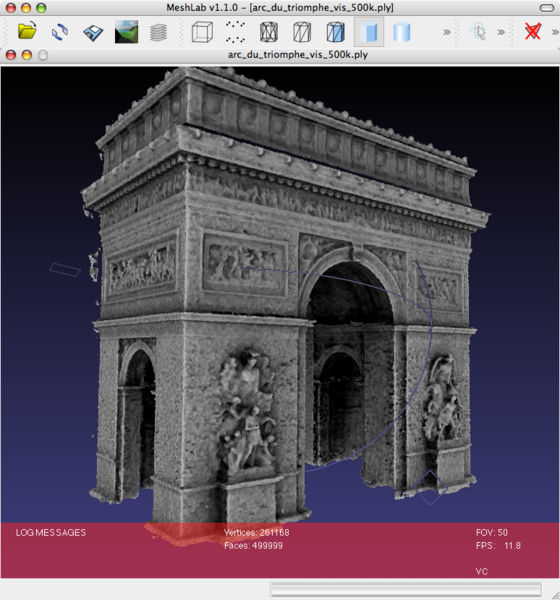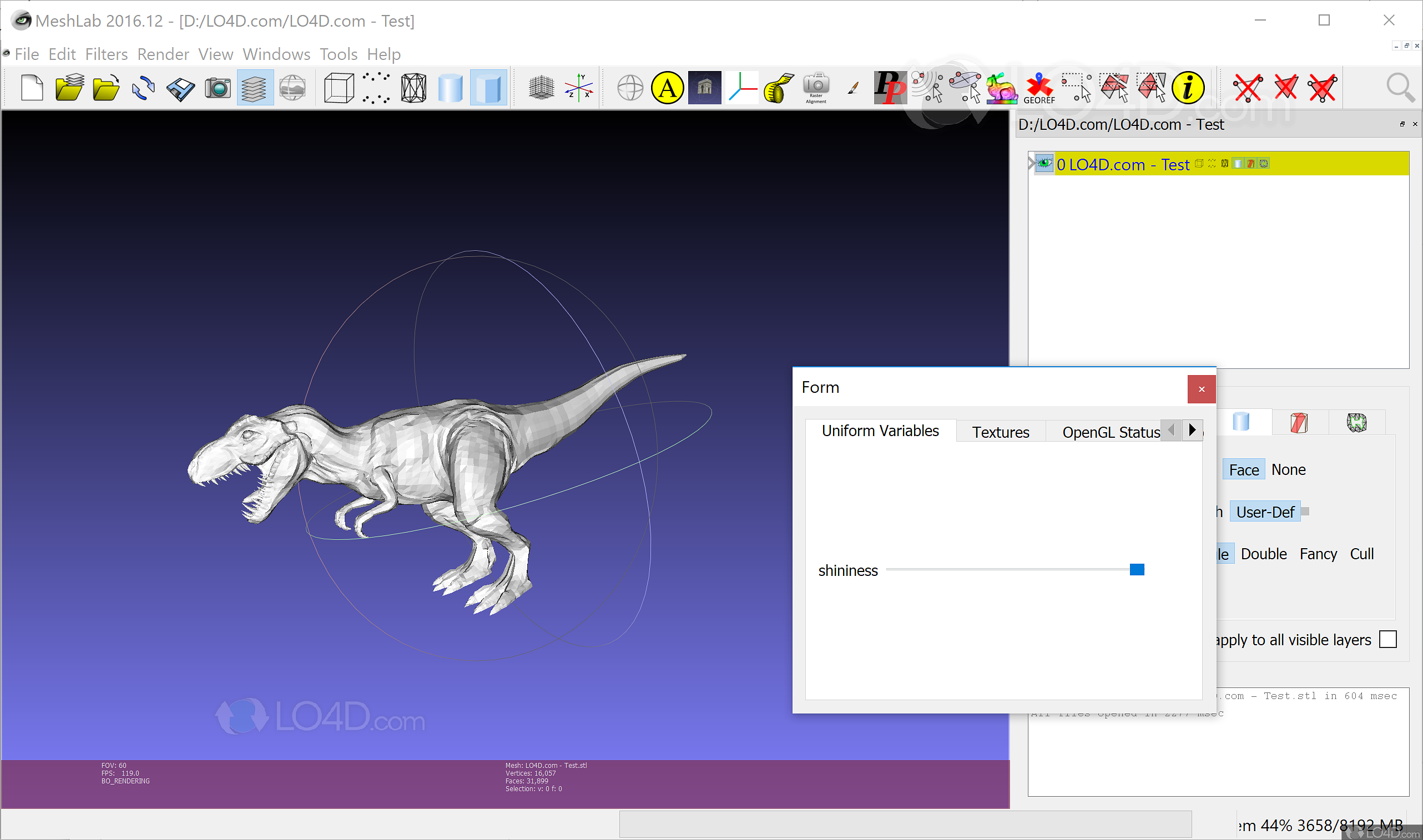

The rendering facilities consist of several modes (wireframe, hidden or flat lines, BackFace Culling, bounding box and more), simple, double side or fancy lighting, colors and shaders, as well as a wide variety of edges, vertices, labels and other elements that can be activated. There is also a wide array of filters which are grouped in over a dozen categories, including several for meshes and layers, smoothing, quality measuring, curvatures and computation related filters as well. The editing toolset contains some interesting instruments, like the Arc3D importer, the Quality Mapper or the Texture parametrization Tool. More precisely, you will be able to load 3D-Studio (.3DS) files, Alias Wavefront Object (.OBJ) items, even Protein Data Bank (.PDB) documents to name only a few from the over 20 types currently supported. Customizing the layout can be done by dragging the toolbars on several rows and having them aligned either horizontally or vertically.Ī great thing about MeshLab is the extensive support for many formats that can be authored with almost any dedicated modeling solution out there. The interface is well organized, with a generous space for loading the 3D designs and hosting all the functions in such a manner that most of them are only one click away. For those who work with polygon meshes, particularly triangular ones, a utility like MeshLab could be just the right choice.

Handling three-dimensional models and editing meshes or creating new ones from scratch will surely become easier if the appropriate tools are at hand.


 0 kommentar(er)
0 kommentar(er)
